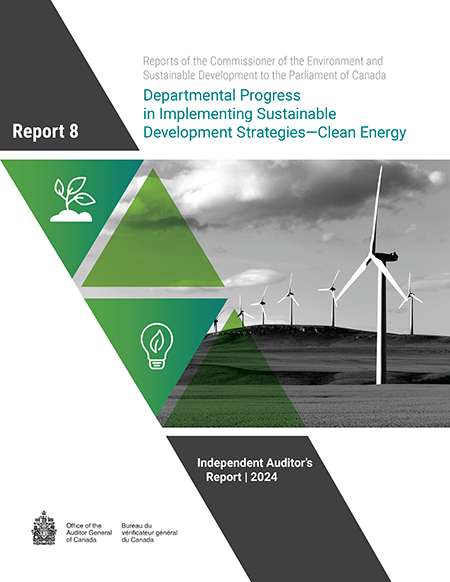2024 Reports 6 to 10 of the Commissioner of the Environment and Sustainable Development to the Parliament of Canada
Report 8—Departmental Progress in Implementing Sustainable Development Strategies—Clean Energy
Key facts and findings
- Over 82% of the electricity produced annually in Canada is from renewable and non‑emitting sources; this leaves a gap of more than 7 percentage points towards reaching the target of 90% of electricity generated from renewable and non‑emitting sources by 2030.
- Reported departmental progress did not effectively tell how federal investments directly contributed to closing the gap of meeting the 90% clean power generation target by 2030.
- The implementation of federal measures led to around 100 petajoules of total annual energy savings towards a target of 600 petajoules of total annual savings by 2030. Canada is unlikely to meet this target by 2030 unless more aggressive action is undertaken.
- Departmental activity outputs such as investments made or number of projects completed has progressed, but information was missing on what these achievements meant in energy generation outcomes.
Why we did this audit
- Generating cleaner power and reducing energy consumption through improved efficiencies are key to reducing Canada’s greenhouse gas emissions and supporting the transition to a low-carbon economy.
- A cleaner energy system provides benefits such as healthier homes, more resilient infrastructure and ecosystems, and jobs for Canadians across the country.
- Canada’s Federal Implementation Plan for the 2030 Agenda expects its federal organizations to report to Canadians on their progress made towards the achievement of the United Nations’ Sustainable Development Goal targets that fall within their mandates.
Recommendation
- Natural Resources Canada, Environment and Climate Change Canada, Crown-Indigenous Relations and Northern Affairs Canada, and Indigenous Services Canada should clearly describe in their departmental strategies and progress reporting how the results of all their actions contribute to the achievement of the clean power generation and the energy efficiency targets under the clean energy goal in the 2019–2022 Federal Sustainable Development Strategy. To achieve this, they should use, to the extent possible, the same or equivalent progress measurement metrics that are provided for these targets in the federal strategy. In a similar fashion, when reporting progress against corresponding United Nations’ Sustainable Development Goal targets 7.2 and 7.3 on renewable energy and energy efficiency, the departments should use applicable and specific progress measurement indicators.
Please see the Link opens a PDF file in a new browser windowfull report to read our complete findings, analysis, recommendations and the audited organizations’ responses.
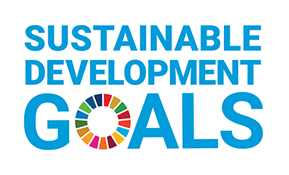

In 2015, Canada committed to achieving the United Nations’ 2030 Agenda for Sustainable Development, which includes 17 Sustainable Development Goals. Goal 7 (affordable and clean energy) calls for signatories to do the following: “Ensure access to affordable, reliable, sustainable and modern energy for all.” The government’s commitment to increase clean power generation and energy efficiency relates directly to this goal. All federal ministers and organizations are accountable for implementing the 2030 Agenda for Sustainable Development and the Sustainable Development Goals within their areas of responsibility.
Visit our Sustainable Development page to learn more about sustainable development and the Office of the Auditor General of CanadaOAG.
Exhibit highlights
Results reported showed that Canada needs to significantly accelerate progress towards the 2030 Federal Sustainable Development Strategy clean power generation target
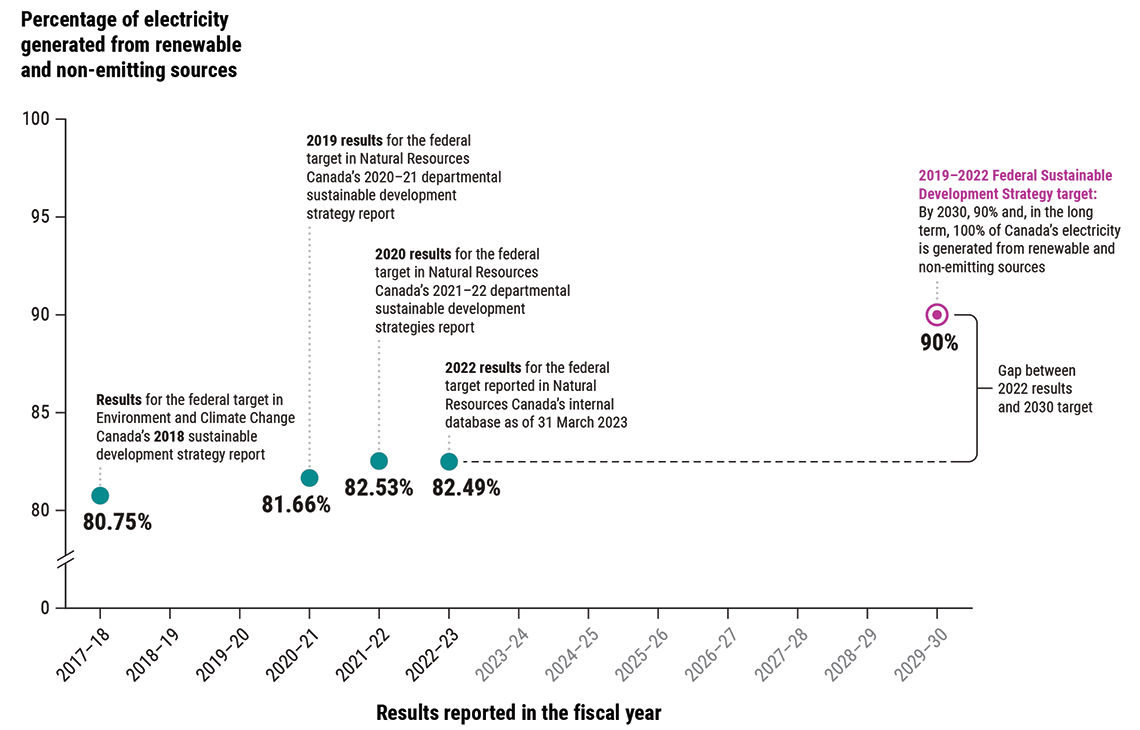
Note: Results presented on the clean energy target for the 2022–23 fiscal year were extracted from departmental internal reports. Natural Resources Canada did not report on progress in implementing its sustainable development strategy in the 2022–23 fiscal year, which was in alignment with requirements under the Federal Sustainable Development Act.
Source: Based on data from Natural Resources Canada and Environment and Climate Change Canada
Text version
This graph shows results reported since 2018 on progress towards the 2030 Federal Sustainable Development Strategy clean power generation target.
In the 2017–18 fiscal year, results for the federal target were reported in Environment and Climate Change Canada’s 2018 sustainable development strategy report. The percentage of electricity generated in Canada from renewable and non‑emitting sources was 80.75%.
In the 2020–21 fiscal year, 2019 results for the federal target were reported in Natural Resources Canada’s 2020–21 departmental sustainable development strategy report. The percentage of electricity generated in Canada from renewable and non‑emitting sources was 81.66%.
In the 2021–22 fiscal year, 2020 results for the federal target were reported in Natural Resources Canada’s 2021–22 departmental sustainable development strategies report. The percentage of electricity generated in Canada from renewable and non‑emitting sources was 82.53%.
In the 2022–23 fiscal year, 2022 results for the federal target were reported in Natural Resources Canada’s internal database as of 31 March 2023. The percentage of electricity generated in Canada from renewable and non‑emitting sources was 82.49%.
The 2019–2022 Federal Sustainable Development Strategy target is as follows: By 2030, 90% and, in the long term, 100% of Canada’s electricity is generated from renewable and non‑emitting sources.
The gap between the 2022 results and the 2030 target is 7.51 percentage points.
Results reported by Natural Resources Canada were not on track to achieve the government’s 2030 energy efficiency target unless more aggressive action is undertaken
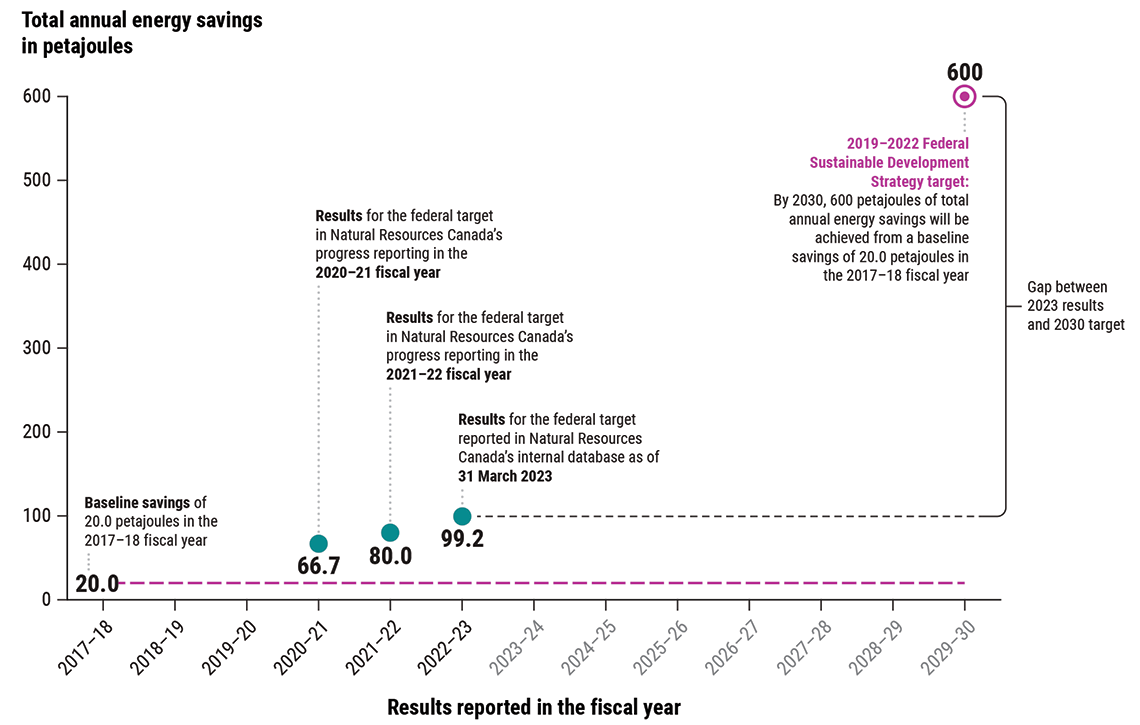
Source: Based on data from Natural Resources Canada
Text version
This graph shows results reported since 2018 on progress towards achieving the government’s 2030 energy efficiency target. Results were not on track to achieve the target unless more aggressive action is undertaken.
In the 2017–18 fiscal year, baseline savings of 20.0 petajoules were established.
In the 2020–21 fiscal year, results for the federal target were reported in Natural Resources Canada’s progress reporting. The total annual energy savings was 66.7 petajoules.
In the 2021–22 fiscal year, results for the federal target were reported in Natural Resources Canada’s progress reporting. The total annual energy savings was 80.0 petajoules.
In the 2022–23 fiscal year, results for the federal target were reported in Natural Resources Canada’s internal database as of 31 March 2023. The total annual energy savings was 99.2 petajoules.
The 2019–2022 Federal Sustainable Development Strategy target is as follows: By 2030, 600 petajoules of total annual energy savings will be achieved from a baseline savings of 20.0 petajoules in the 2017–18 fiscal year.
The gap between the 2023 results and the 2030 target is 500.8 petajoules.
Natural Resources Canada’s actions to increase energy efficiency and reduce energy usage by 2030 were not on track to meet the target
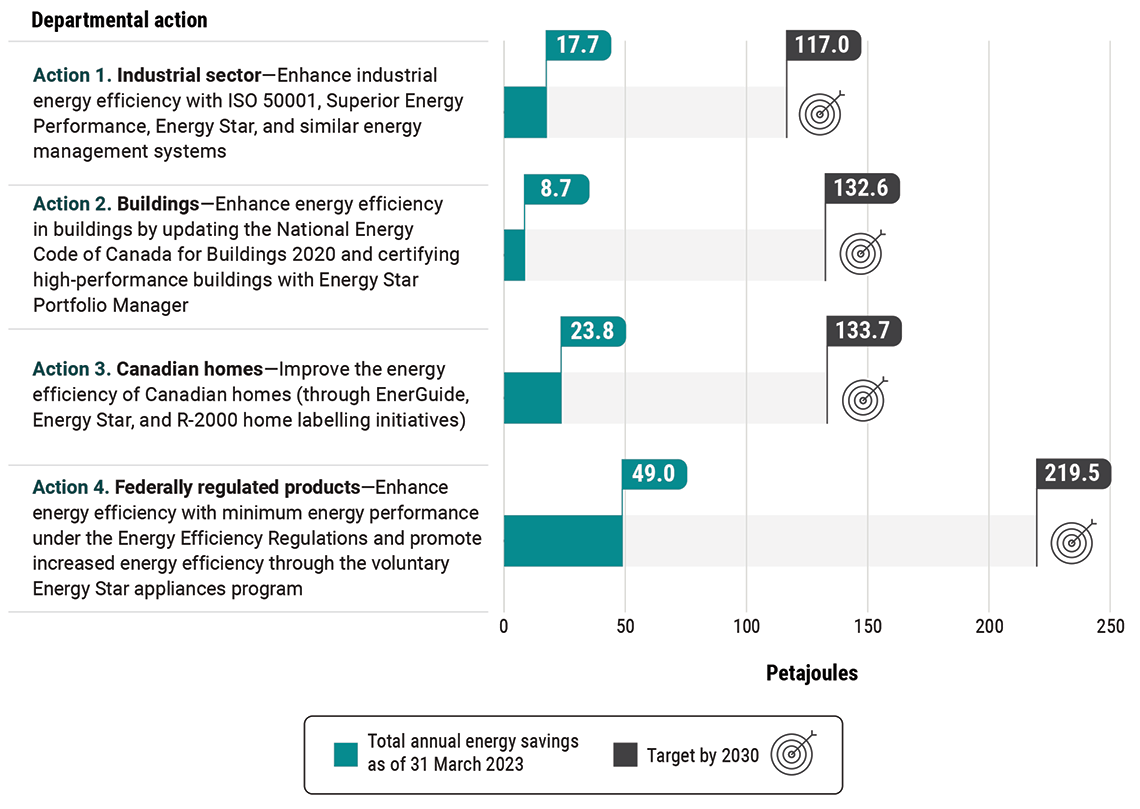
Source: Based on data from Natural Resources Canada
Text version
This graph shows the total annual energy savings as of 31 March 2023 and the targets by 2030 for 4 departmental actions. None of the targets were on track.
Action 1. Industrial sector—Enhance industrial energy efficiency with ISO 50001, Superior Energy Performance, Energy Star, and similar energy management systems. For this action, the total annual energy savings as of 31 March 2023 was 17.7 petajoules, and the target by 2030 is 117.0 petajoules.
Action 2. Buildings—Enhance energy efficiency in buildings by updating the National Energy Code of Canada for Buildings 2020 and certifying high-performance buildings with Energy Star Portfolio Manager. For this action, the total annual energy savings as of 31 March 2023 was 8.7 petajoules, and the target by 2030 is 132.6 petajoules.
Action 3. Canadian homes—Improve the energy efficiency of Canadian homes (through EnerGuide, Energy Star, and R‑2000 home labelling initiatives). For this action, the total annual energy savings as of 31 March 2023 was 23.8 petajoules, and the target by 2030 is 133.7 petajoules.
Action 4. Federally regulated products—Enhance energy efficiency with minimum energy performance under the Energy Efficiency Regulations and promote increased energy efficiency through the voluntary Energy Star appliances program. For this action, the total annual energy savings as of 31 March 2023 was 49.0 petajoules, and the target by 2030 is 219.5 petajoules.
Infographic

Text version
Departmental Progress in Implementing Sustainable Development Strategies—Clean Energy
The 2019–2022 Federal Sustainable Development Strategy set the objectives that by 2030, 90% of Canada’s electricity would be generated from renewable and non-emitting sources, and 100% in the long term, and 600 petajoules of total annual energy savings will be achieved as a result of adoption of energy efficiency codes, standards, and practices.
Here’s how it’s going so far.
The 2019–2022 Federal Sustainable Development Strategy committed that by 2030, 90% of Canada’s electricity would be generated from renewable and non‑emitting sources, and 100% in the long term.
As of March 2023, 82.49% of electricity is generated from renewable and non‑emitting sources. An additional 7.51 percentage points of electricity will need to be generated from renewable and non‑emitting sources to meet the 2030 commitment.
As of 2018, 80.75% of Canada’s electricity was already generated from renewable and non‑emitting sources.
The 2019–2022 Federal Sustainable Development Strategy committed that by 2030, 600 petajoules of total annual energy savings will be achieved as a result of adoption of energy efficiency codes, standards, and practices from a baseline savings of 20 petajoules in 2017–18.
One petajoule is equivalent to the energy use of 10,000 homes for 1 year. Six hundred petajoules is equivalent to 6 million households of total energy savings per year.
As of March 2023, the implementation of federal measures led to approximately 100 petajoules of total annual energy savings. That’s 1 million households of savings.
Related information
Entities
Tabling date
- 7 November 2024

